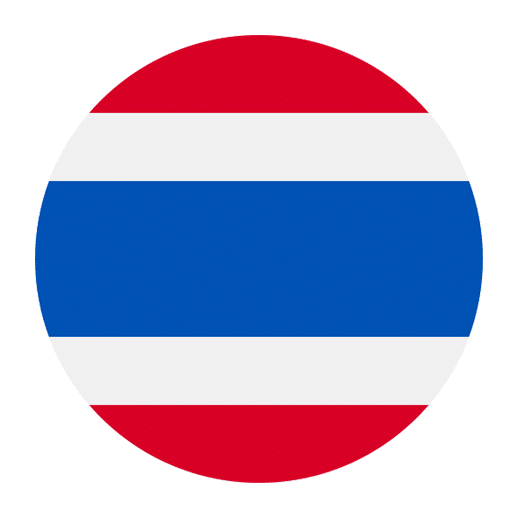Crafting and DIY projects have become popular hobbies around the world, and Thailand is no exception. For English speakers who are diving into the world of Thai language and culture, learning specific vocabulary related to these hobbies can be incredibly beneficial. Whether you’re working on a woodwork project, sewing, or creating intricate Thai crafts, knowing the right terms can make your experience smoother and more immersive. In this article, we’ll explore some common Thai words for crafting and DIY projects, providing you with the tools to communicate effectively and enhance your skills.
Basic Crafting Terms
Starting with the basics, here are some fundamental words that you’ll encounter frequently in any crafting or DIY context:
1. **Craft (งานฝีมือ)**
– Thai: งานฝีมือ (ngaan fi-mue)
– Example: งานฝีมือของฉันคือการทำสร้อยข้อมือ (My craft is making bracelets).
2. **DIY (ทำเอง)**
– Thai: ทำเอง (tham eng)
– Example: ฉันชอบทำงาน DIY ในเวลาว่าง (I like to do DIY projects in my free time).
3. **Material (วัสดุ)**
– Thai: วัสดุ (wa-sadu)
– Example: วัสดุที่ใช้ทำโครงการนี้คืออะไร (What material is used for this project)?
4. **Tool (เครื่องมือ)**
– Thai: เครื่องมือ (khrueang-mue)
– Example: คุณต้องการเครื่องมืออะไรบ้าง (What tools do you need)?
Types of Materials
Knowing the names of different materials is crucial for any crafting or DIY project. Here are some common materials and their Thai translations:
1. **Wood (ไม้)**
– Thai: ไม้ (mai)
– Example: โต๊ะนี้ทำจากไม้เนื้อแข็ง (This table is made of hardwood).
2. **Fabric (ผ้า)**
– Thai: ผ้า (pha)
– Example: ฉันซื้อผ้าสำหรับทำชุดใหม่ (I bought fabric to make a new dress).
3. **Paper (กระดาษ)**
– Thai: กระดาษ (gra-daad)
– Example: เราใช้กระดาษสีสำหรับการ์ดวันเกิด (We use colored paper for birthday cards).
4. **Glue (กาว)**
– Thai: กาว (gaaw)
– Example: คุณมีกาวสำหรับติดไม้ไหม (Do you have glue for wood)?
5. **Paint (สี)**
– Thai: สี (si)
– Example: ฉันต้องการสีใหม่สำหรับทาบ้าน (I need new paint for the house).
Common Tools
Having the right tools is essential for any crafting or DIY project. Here are some common tools and their Thai names:
1. **Scissors (กรรไกร)**
– Thai: กรรไกร (gan-grai)
– Example: กรรไกรนี้คมมาก (These scissors are very sharp).
2. **Hammer (ค้อน)**
– Thai: ค้อน (khaawn)
– Example: ฉันต้องใช้ค้อนเพื่อตอกตะปู (I need a hammer to drive the nails).
3. **Screwdriver (ไขควง)**
– Thai: ไขควง (khai-khuang)
– Example: คุณมีไขควงแบบไหนบ้าง (What types of screwdrivers do you have)?
4. **Sewing Machine (จักรเย็บผ้า)**
– Thai: จักรเย็บผ้า (jak-yep-pha)
– Example: ฉันใช้จักรเย็บผ้าในการทำเสื้อผ้า (I use a sewing machine to make clothes).
5. **Paintbrush (แปรงทาสี)**
– Thai: แปรงทาสี (praeng-tha-si)
– Example: คุณต้องการแปรงทาสีขนาดไหน (What size paintbrush do you need)?
Project-Specific Vocabulary
Depending on the type of project you’re working on, you might need more specialized vocabulary. Here are some terms for specific types of crafting and DIY projects:
Woodworking
1. **Saw (เลื่อย)**
– Thai: เลื่อย (leuai)
– Example: เราใช้เลื่อยตัดไม้ (We use a saw to cut wood).
2. **Nail (ตะปู)**
– Thai: ตะปู (ta-puu)
– Example: ตะปูนี้ยาวเกินไป (This nail is too long).
3. **Sandpaper (กระดาษทราย)**
– Thai: กระดาษทราย (gra-daad sai)
– Example: คุณต้องใช้กระดาษทรายขัดไม้ก่อนทาสี (You need to use sandpaper to smooth the wood before painting).
Sewing and Textiles
1. **Thread (ด้าย)**
– Thai: ด้าย (daai)
– Example: ด้ายนี้เหมาะสำหรับผ้าบาง (This thread is suitable for delicate fabrics).
2. **Needle (เข็ม)**
– Thai: เข็ม (khem)
– Example: เข็มนี้เล็กเกินไปสำหรับผ้านี้ (This needle is too small for this fabric).
3. **Pattern (แบบตัดเย็บ)**
– Thai: แบบตัดเย็บ (baep-tat-yep)
– Example: ฉันต้องการแบบตัดเย็บสำหรับชุดเดรส (I need a pattern for a dress).
Painting and Drawing
1. **Canvas (ผ้าใบ)**
– Thai: ผ้าใบ (pha-bai)
– Example: ฉันกำลังวาดภาพบนผ้าใบ (I am painting on a canvas).
2. **Palette (จานสี)**
– Thai: จานสี (jaan-si)
– Example: คุณสามารถใช้จานสีนี้สำหรับผสมสี (You can use this palette to mix colors).
3. **Easel (ขาตั้ง)**
– Thai: ขาตั้ง (kha-tang)
– Example: คุณต้องการขาตั้งสำหรับภาพวาดไหม (Do you need an easel for the painting)?
Common Phrases for Crafting and DIY Projects
To help you communicate more effectively while working on your projects, here are some useful phrases:
1. **How do I use this tool?**
– Thai: ฉันจะใช้เครื่องมือนี้อย่างไร (Chan ja chai khrueang-mue ni yang-rai)?
2. **Where can I buy materials?**
– Thai: ฉันสามารถซื้อวัสดุได้ที่ไหน (Chan samart sue wa-sadu dai thi-nai)?
3. **Can you help me with this project?**
– Thai: คุณช่วยฉันทำโครงการนี้ได้ไหม (Khun chuai chan tham khrong-kan ni dai mai)?
4. **I need more glue.**
– Thai: ฉันต้องการกาวมากขึ้น (Chan tong-kan gaaw maak khuen).
5. **This fabric is beautiful.**
– Thai: ผ้านี้สวยมาก (Pha ni suai maak).
Helpful Tips for Learning Crafting Vocabulary
Learning a new language can be challenging, but here are some tips to help you master Thai crafting vocabulary:
1. **Practice Regularly**
– Consistency is key. Try to practice a few new words each day and use them in sentences to reinforce your memory.
2. **Use Visual Aids**
– Label your tools and materials with their Thai names. This will help you remember the vocabulary more effectively.
3. **Engage with Native Speakers**
– If possible, join a local crafting group or take a class. Practicing with native speakers can significantly improve your language skills.
4. **Watch Tutorials in Thai**
– There are many Thai crafting and DIY tutorials available online. Watching these can help you learn the vocabulary in context and improve your comprehension.
5. **Keep a Vocabulary Journal**
– Write down new words and phrases you learn, along with their meanings and example sentences. Review your journal regularly to reinforce your learning.
Conclusion
Diving into the world of crafting and DIY projects in a new language can be both exciting and rewarding. By learning these common Thai words and phrases, you’ll be better equipped to navigate your projects and communicate effectively. Remember, practice and consistency are crucial in language learning. So, keep experimenting with new projects, engage with the local community, and most importantly, enjoy the creative process. Happy crafting!

